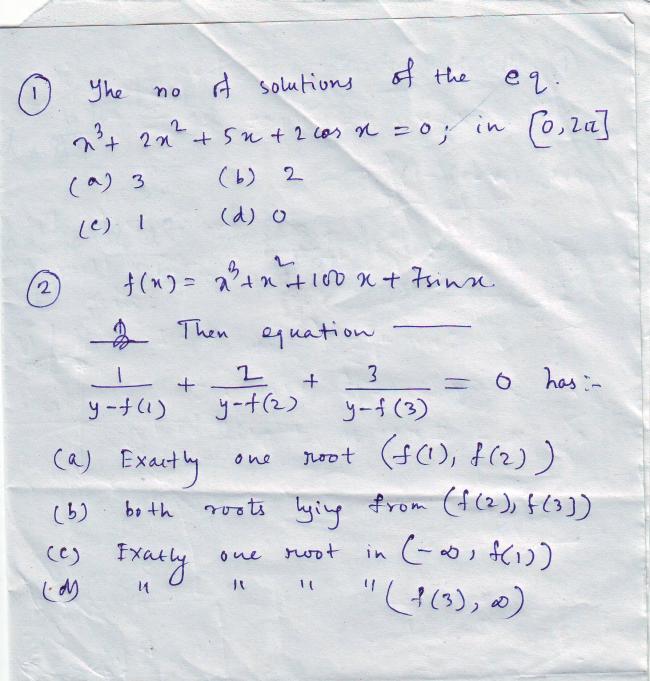these qestion are frm arihant ryt??
7 Answers
first one..
see teh derivative is +ve if x>0...
and at zero the function is 2.. so the function has no +ve roots... so zero solutions.
Elaborating on the doubt asked below..
derivative is 3x2+4x+3+2(1-sin x)
1-sin x is never -ve... and the other terms are +ve .. so the derivative is always greater than equal to zero..
2nd part the answer is a..
the question has almost nothing to do with f(1), f(2) and f(3)
you should see that f(1)<f(2)<f(3).. that; is where the use ends..
Now we have 1/(y-a)+2/(y-b)+3/(y-c)
Hint: Try to use some limit around a, b and c to prove that there ;is exaclty one real root between a and b and one between b and c.. no more...
So in your question the right answer will be part a
Sir,could you explain the second problem a bit more ,
I could not get........ "try to use limit...."
The functino is continuous...
Also.. the RHL at f(1) is +infinty.. while the LHL at f(2) is -infintiy..
The function is continuous in between .. hence is is zero in between...
The only question that remains un answered.. why is it zero in between exaclty once?
answer of first question is zero. u can use graphical method.it is a monotonically increasing function.o it has only one root.
